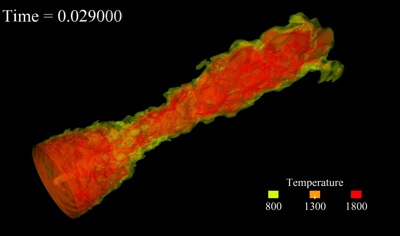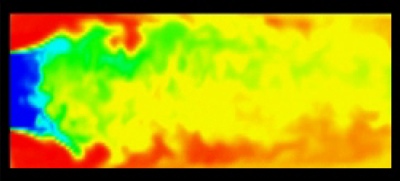academics
research
publications
os x howto
links
turbulent mixing and combustion


Modeling the rate of scalar mixing in turbulent flow presents an important practical challenge. For example, in non-premixed combustion, the heat release is almost entirely determined by the mixing rate. Rapid mixing of the initially separated fiel and oxidizer is required to maximize the heat release rate and overall efficiently of a general compact combustor. The rate of mixing in the non-premixed combustion is expressed by the dissipation rate of the scalar variance, which is not available directly from turbulent simulations that use any kind of turbulence modeling. Similar issues arise in any reacting turbulent flow where the initial distribution of reacting species is non-uniform. Therefore the dissipation has to be modeled.
All present dissipation models use algebraic relations between the dissipation and known variables, implying an instantaneous connection between the large-scale flow features and the molecular level of mixing, represented by the dissipation. In the present work, an a priori study shows that the dissipation-rate is instead most highly correlated with the large-scale eddies at a previous time. Therefore, our modeling approach takes this "lag" into account. The new model is tested in large eddy simulation of the Sydney bluff-body flame. We show that in the region of the high dissipation latel (the "neck" region of the flame), the lag-model gives improved predictions when compared to the state of the art algebraic model.
relevant publications
- SG Chumakov, J Larsson, C Schmitt, Lag-modeling approach for dissipation terms in large eddy simulation, CTR Annual Research Briefs, (2009)
Last modified Feb 09 2024 01:58